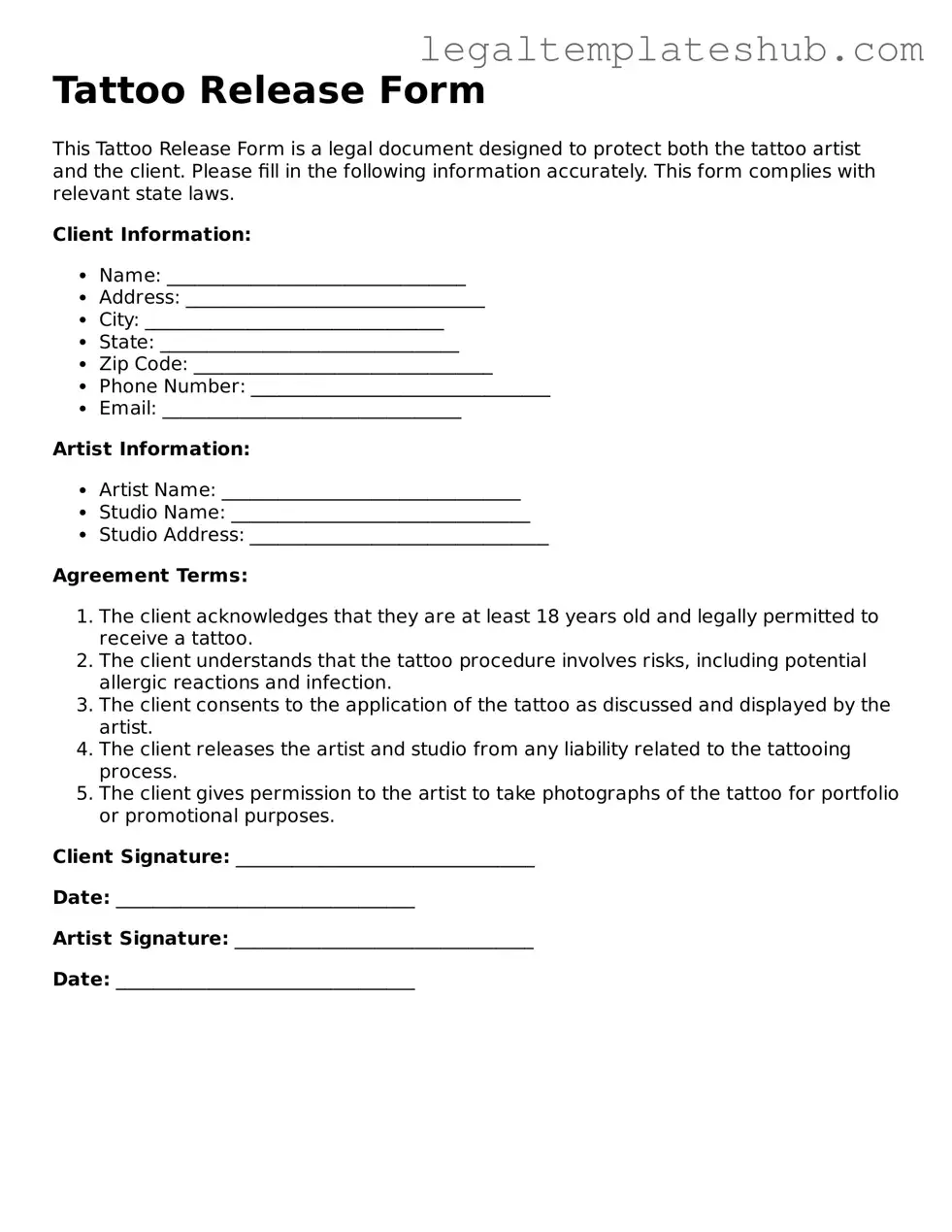Printable Tattoo Release Template
A Tattoo Release form is a legal document that grants permission for a tattoo artist to use images of a client's tattoo for promotional purposes. This form protects both the artist's rights and the client's privacy. To ensure your interests are safeguarded, consider filling out the form by clicking the button below.
Access Editor
